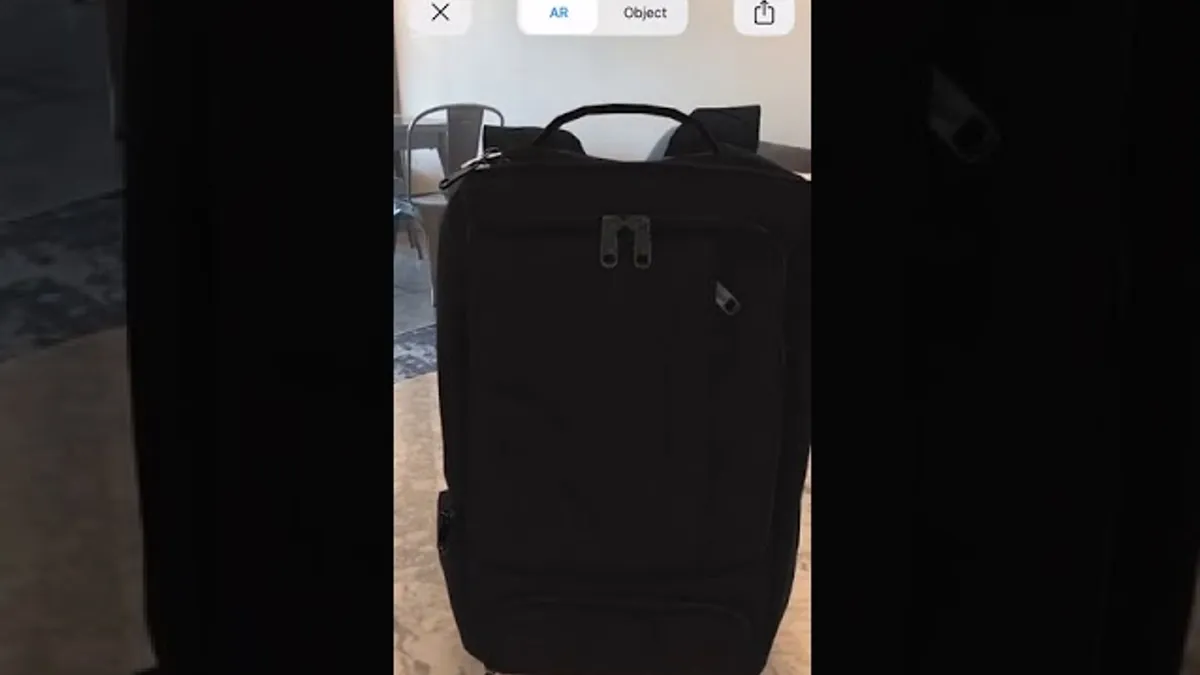Brief:
- EBags boosted several key sales metrics after letting shoppers see luggage and backpacks with 3D and augmented reality (AR) imagery on its website, according to RIS News. Shoppers could see the 3D models from all angles on desktop or mobile screens. Tapping the "view in your room" button on its mobile site opened an AR version overlaid on their real surroundings.
- Conversion rates for web visitors who interacted with the 3D and AR features jumped 112% on mobile devices and 81% on desktop browsers, while revenue per visit (RPV) surged 87%. EBags' most engaged shoppers were 35% more likely to convert with 3D and AR supplementing traditional photography.
- EBags, which is owned by Samsonite, worked with 3D and AR developer Vertebrae on the interactive content. Vertebrae also has worked with Adidas, Toyota, Crate & Barrel, Facebook, Coach and Microsoft, among other brands, per the company.
Insight:
EBags' positive results from the 3D and AR content on its website indicate that greater shopper engagement can lead to higher sales. With millions of consumers using their mobile devices to shop online during the coronavirus pandemic, e-commerce sites like eBags need to find more impactful ways to showcase products. 3D and AR content can showcase products more effectively than static images, while engaging shoppers in a more immersive experience.
Before the pandemic, global spending on augmented and virtual reality (AR/VR) technology by the retail industry was forecast to reach $1.5 billion this year, per researcher International Data Corp. (IDC). The health crisis likely has disrupted that spending with many retailers seeing declining sales because of lockdowns and a slowing economy. The pandemic also has emphasized the importance of e-commerce to retailers, making investments in newer technologies that engage shoppers more significant.
A consideration for e-commerce sites is the expense of creating 3D and AR models of their inventory. EBags has thousands of products to display on its website, and the static images of those items are mostly adequate in showing key attributes like style, color and size. EBags highlighted its top-selling private-label backpacks, organizers and carry-on luggage with 3D and AR content so as to make the additional investment in interactive features more worthwhile.
EBags is among the marketers that have used AR technology either in product demonstrations or advertising. Johnson & Johnson this week started letting consumers in China virtually try on colored contact lenses in its Acuvue mini programs for messaging app WeChat and social commerce app Taobao. Bollé last month released an AR experience to let Instagram users virtually try on its Phantom model of sunglasses, and see how its different styles of lenses work. Adidas, Burberry, Gucci, Nike and Puma also have adopted AR technology in their marketing.















